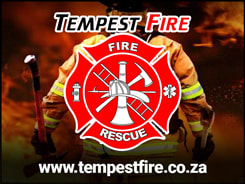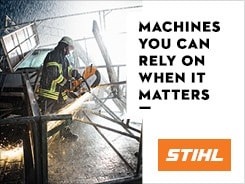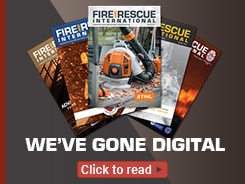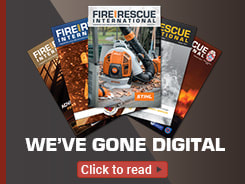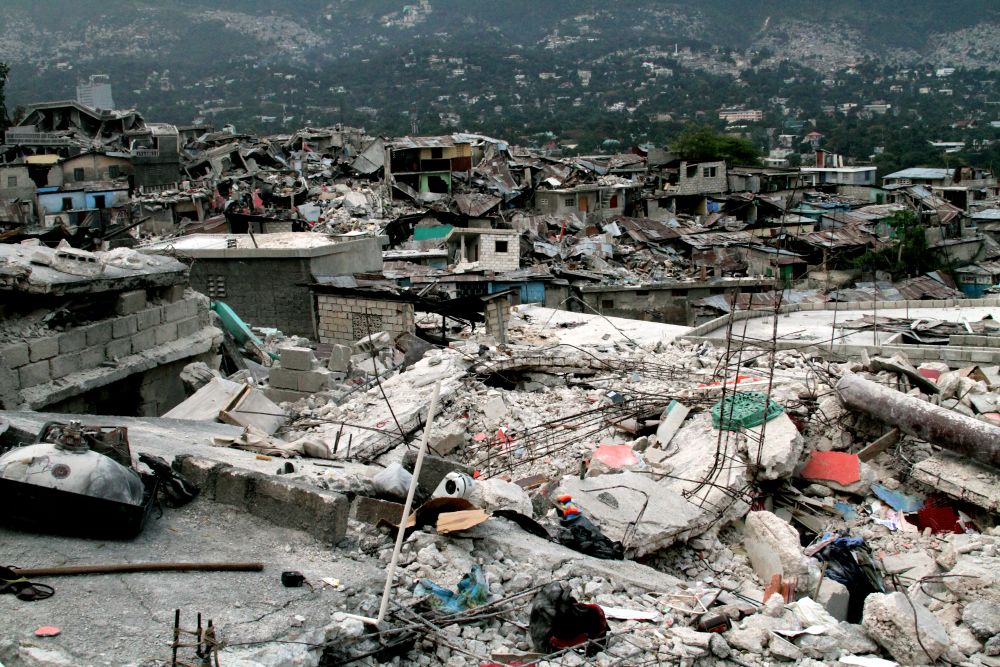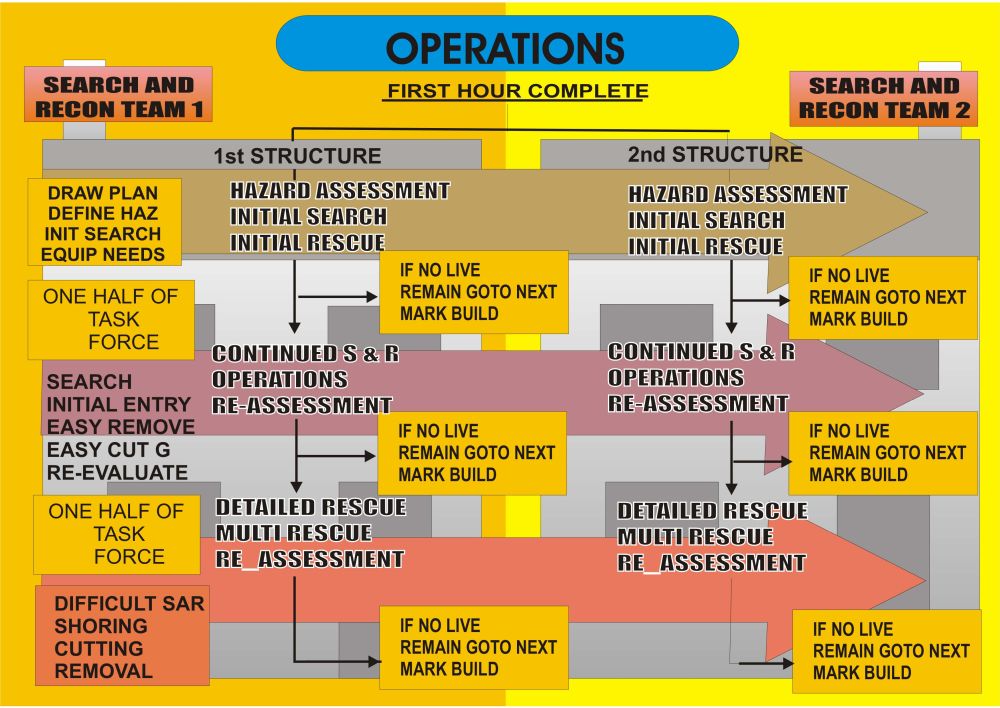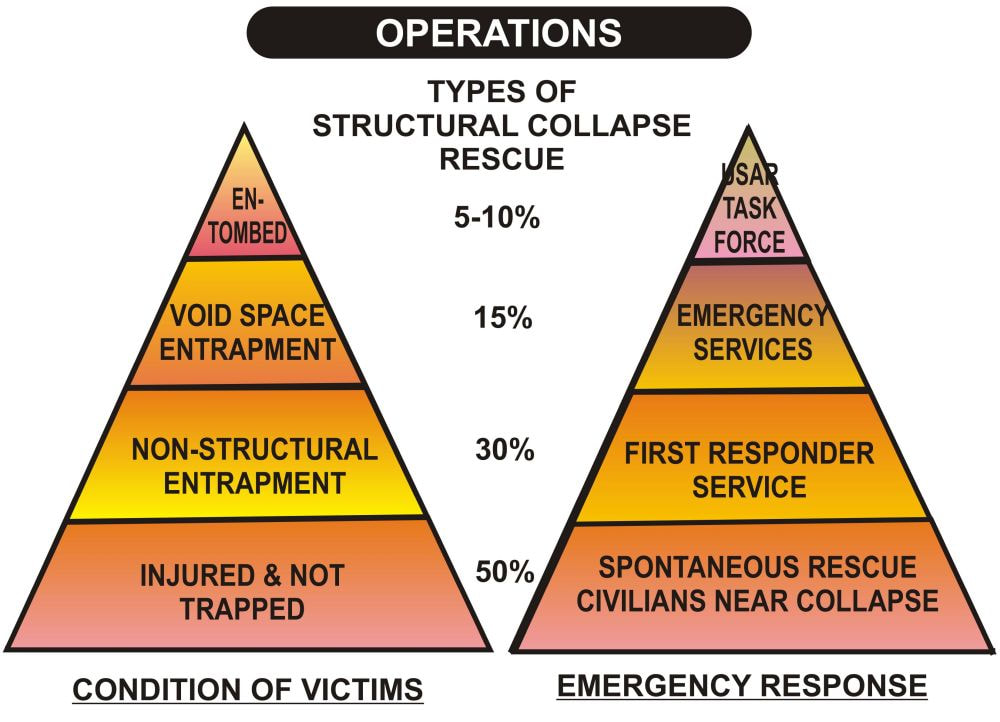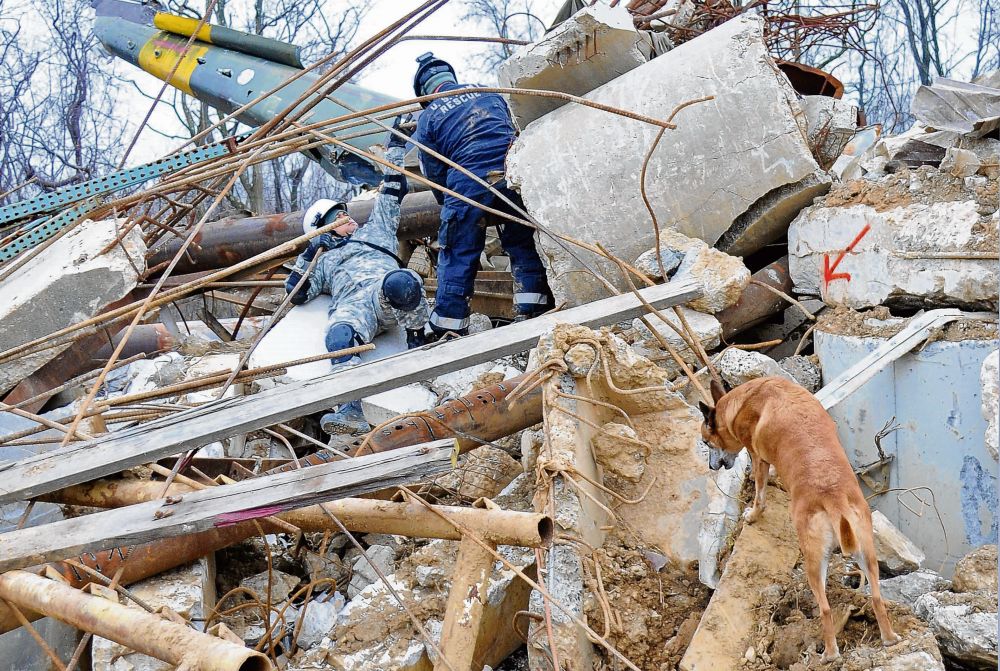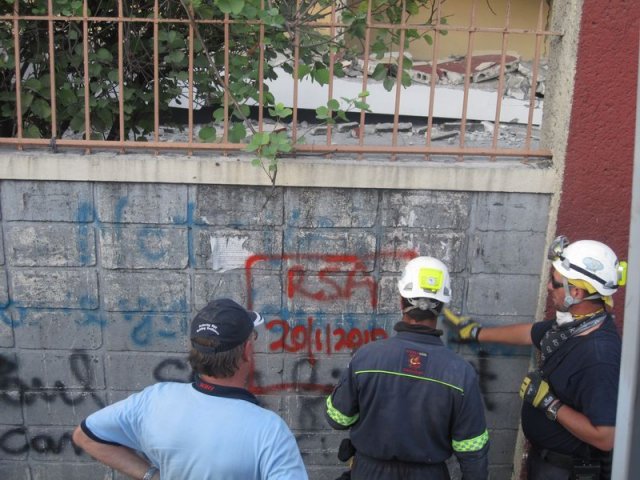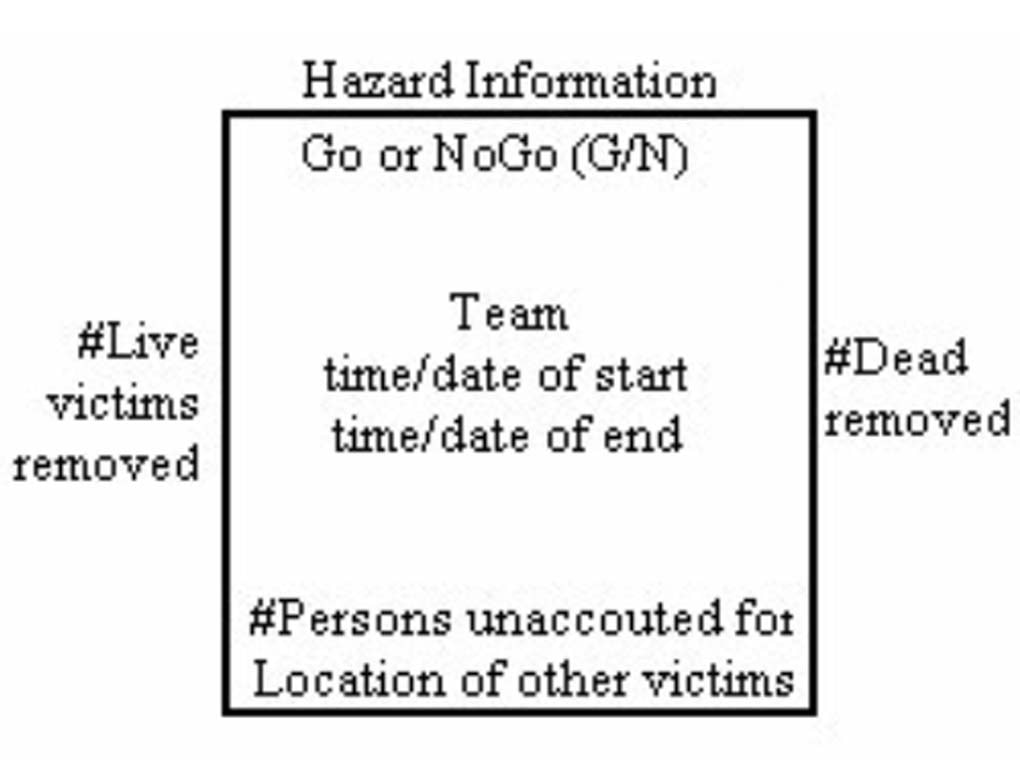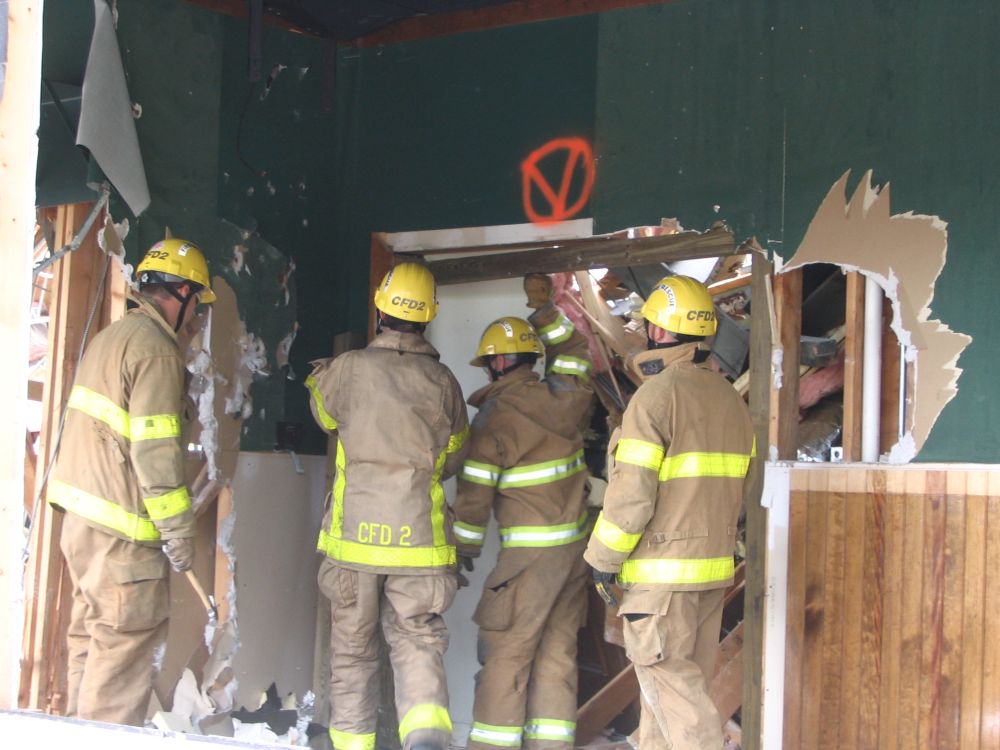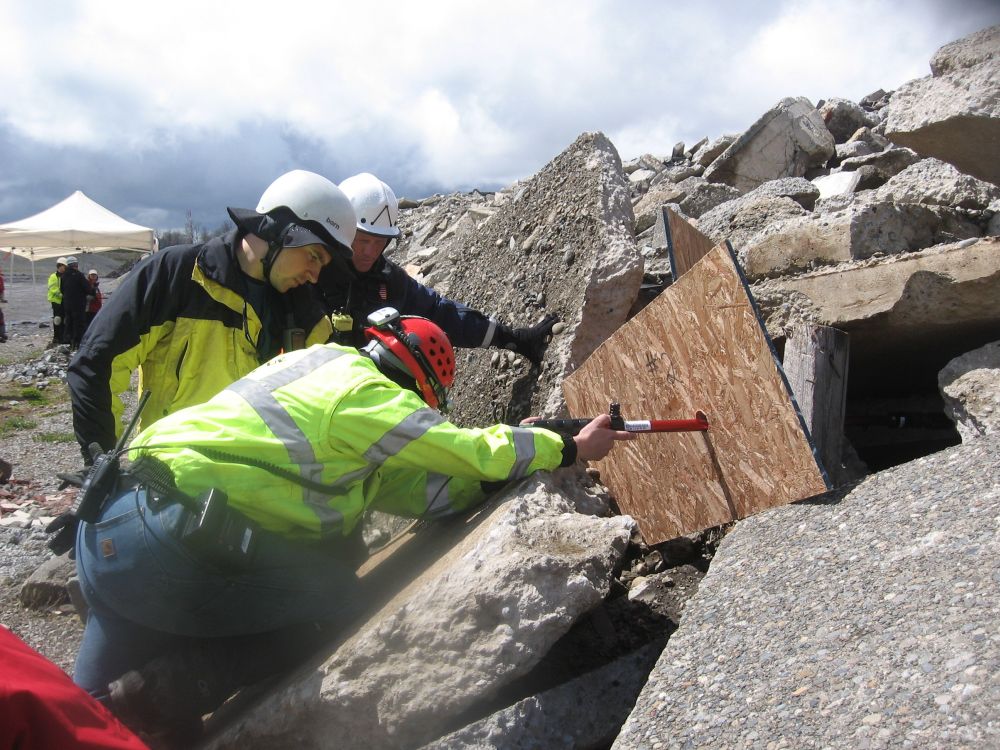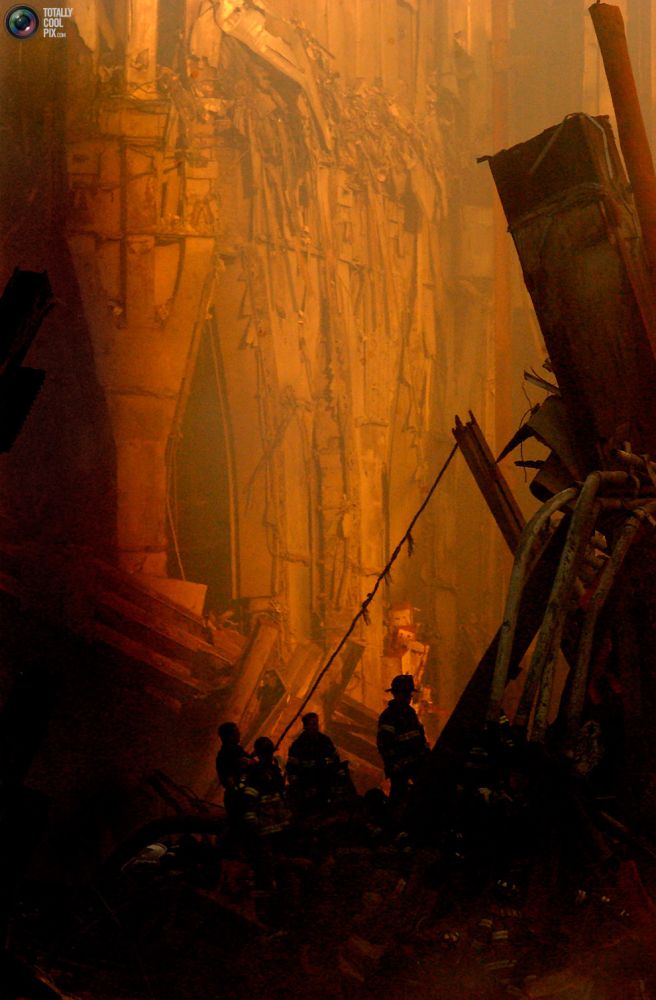- Home
- Magazines
-
Newsletters
- 19 July 2024
- 12 July 2024
- 5 July 2024
- 28 June 2024
- 14 June 2024
- 7 June 2024
- 31 May 2024
- 24 May 2024
- 17 May 2024
- 10 May 2024
- 3 May 2024
- 26 April 2024
- 19 April 2024
- 12 April 2024
- 22 March 2024
- 15 March 2024
- 8 March 2024
- 1 March 2024
- 23 February 2024
- 16 February 2024
- 9 February 2024
- 26 January 2024
- 19 January 2024
- 12 January 2024
- 22 December 2023
- 1 December 2023
- 24 November 2023
- 10 November 2023
- 3 November 2023
- 27 October 2023
- 20 October 2023
- 13 October 2023
- 6 October 2023
- 29 September 2023
- 22 September 2023
- 15 September 2023
- 8 September 2023
- 25 August 2023
- 18 August 2023
- 11 August 2023
- 4 August 2023
- 28 July 2023
- 21 July 2023
- 14 July 2023
- 7 July 2023
- 30 June 2023
- 23 June 2023
- 15 June 2023
- 2 June 2023
- 26 May 2023
- 19 May 2023
- 12 May 2023
- 5 May 2023
- 28 April 2023
- 21 April 2023
- 14 April 2023
- 6 April 2023
- 31 March 2023
- 24 March 2023
- 17 March 2023
- 10 March 2023
- 3 March 2023
- 24 February 2023
- 17 February 2023
- 10 February 2023
- 3 February 2023
- 27 January 2023
- 13 January 2023
- 22 December 2022
- 15 December 2022
- 9 December 2022
- 2 December 2022
- 25 November 2022
- 18 November 2022
- 11 November 2022
- 4 November 2022
- Advertising
- Subscribe
- Articles
-
Galleries
- AOSH Firexpo 2024
- Midvaal Fit to Fight Fire 2024
- WoF KNP 2023 Gallery
- TFA 2023 Gallery
- DMISA Conference 2023
- ETS 2023 Gallery
- Drager Fire Combat and Rescue Challenge 2023
- AOSH Firexpo 2023
- Midvaal Fit to Fight Fire
- WC IFFD 2023
- NMU 13th Fire Management Symposium 2022
- JOIFF Africa Conference 2022
- ETS 2022 Gallery
- TFA 2022 Gallery
- IFFD 2018
- SAESI
- TFA
- WRC 2018
- WRC 2019
- A-OSH/Securex
- IFE AGM 2019
- ETS Ind Fire Comp Nov 2019
- ETS Challenge 2021
- Drager launch
- Drager Fire Combat and Rescue Challenge 2022
- TFA
- Contact
- Home
- Magazines
-
Newsletters
- 19 July 2024
- 12 July 2024
- 5 July 2024
- 28 June 2024
- 14 June 2024
- 7 June 2024
- 31 May 2024
- 24 May 2024
- 17 May 2024
- 10 May 2024
- 3 May 2024
- 26 April 2024
- 19 April 2024
- 12 April 2024
- 22 March 2024
- 15 March 2024
- 8 March 2024
- 1 March 2024
- 23 February 2024
- 16 February 2024
- 9 February 2024
- 26 January 2024
- 19 January 2024
- 12 January 2024
- 22 December 2023
- 1 December 2023
- 24 November 2023
- 10 November 2023
- 3 November 2023
- 27 October 2023
- 20 October 2023
- 13 October 2023
- 6 October 2023
- 29 September 2023
- 22 September 2023
- 15 September 2023
- 8 September 2023
- 25 August 2023
- 18 August 2023
- 11 August 2023
- 4 August 2023
- 28 July 2023
- 21 July 2023
- 14 July 2023
- 7 July 2023
- 30 June 2023
- 23 June 2023
- 15 June 2023
- 2 June 2023
- 26 May 2023
- 19 May 2023
- 12 May 2023
- 5 May 2023
- 28 April 2023
- 21 April 2023
- 14 April 2023
- 6 April 2023
- 31 March 2023
- 24 March 2023
- 17 March 2023
- 10 March 2023
- 3 March 2023
- 24 February 2023
- 17 February 2023
- 10 February 2023
- 3 February 2023
- 27 January 2023
- 13 January 2023
- 22 December 2022
- 15 December 2022
- 9 December 2022
- 2 December 2022
- 25 November 2022
- 18 November 2022
- 11 November 2022
- 4 November 2022
- Advertising
- Subscribe
- Articles
-
Galleries
- AOSH Firexpo 2024
- Midvaal Fit to Fight Fire 2024
- WoF KNP 2023 Gallery
- TFA 2023 Gallery
- DMISA Conference 2023
- ETS 2023 Gallery
- Drager Fire Combat and Rescue Challenge 2023
- AOSH Firexpo 2023
- Midvaal Fit to Fight Fire
- WC IFFD 2023
- NMU 13th Fire Management Symposium 2022
- JOIFF Africa Conference 2022
- ETS 2022 Gallery
- TFA 2022 Gallery
- IFFD 2018
- SAESI
- TFA
- WRC 2018
- WRC 2019
- A-OSH/Securex
- IFE AGM 2019
- ETS Ind Fire Comp Nov 2019
- ETS Challenge 2021
- Drager launch
- Drager Fire Combat and Rescue Challenge 2022
- TFA
- Contact
|
9 February 2024
|
Featured FRI Magazine article: Technical search, using technology to find trapped victims - with some help from man’s best friend by Colin Deiner (FRI Vol 1 no 11)
This week’s featured Fire and Rescue International magazine article is: Technical search, using technology to find trapped victims - with some help from man’s best friend written by Colin Deiner, chief director, Disaster management and Fire Brigade Services, Western Cape Provincial Government (FRI Vol 1 no 11). We will be sharing more technical/research/tactical articles from Fire and Rescue International magazine on a weekly basis with our readers to assist in technology transfer. This will hopefully create an increased awareness, providing you with hands-on advice and guidance. All our magazines are available free of charge in PDF format on our website and online at ISSUU. We also provide all technical articles as a free download in our article archive on our website.
Technical search, using technology to find trapped victims - with some help from man’s best friend
By Colin Deiner, Chief Director, Disaster management and Fire Brigade Services, Western Cape Provincial Government
Rescuing a person trapped in a collapsed structure is arguably the toughest rescue job you could possibly be asked to do. It could take up to twelve hours plus of frustration and backbreaking work to eventually access a victim and remove them from their predicament. Most important, you would want the person to be alive when you finally get to do this.
Technical rescue, in the urban search and rescue context, refers to the search and location of people trapped in collapsed structures by using electronic equipment such as seismic and acoustic listening devices, fibre optic and video based search cameras and canines. Urban search and rescue response normally consists of four phases. The first phase would be immediately after the structural collapse, when many of the victims are not trapped at all and can merely be removed from the surface of the structure without much effort. This normally accounts for 50 percent of all victims and is done by bystanders or informal responders. The second phase consists of persons that are partially trapped and need some sort of assistance to be extricated. Approximately 30 percent of all victims will be found in this situation and can be extricated by the local emergency services.
It starts getting tricky when you get to the third phase when you will find approximately 15 percent of victims trapped in voids formed by collapsed structural members such as beams, walls etc. These people can, in many cases, be rescued through technical rescue squads using methods such as the grid (line-and-hail) search that is performed by a group of rescuers moving in a line over a collapsed structure and identifying voids that have formed where after they shout into the void, listening carefully from a response from a trapped victim.
The remaining five present of victims (fourth phase) are generally trapped deep within a structure and the only possible way of locating them is through a careful process of elimination and the application of specialised skills normally only found in within an urban search and rescue (USAR) task force.
Where to start
Searching for entombed victims in a collapsed structure can be likened to looking for the proverbial needle in a haystack. If you consider that you may be looking for only 5% of a multi-storey structure’s inhabitants when all its floors are laying on the ground you will appreciate how challenging this can become. When you extrapolate this scene to an earthquake scenario, where you might be required to search any number of structures of this size, the situation could become overwhelming. For the purpose of this article, I will only focus on a single structure, however, the practices proposed here, can be adapted to include more than multiple structures on the same collapse site. So how do we go about it?
First up we need to establish a strong incident command structure and develop a search plan. It is only by marrying our plan and the resources at our disposal to the risk, that we can achieve any success. Having had the opportunity to be involved in the management of several structural collapse search and rescue operations in the past, I have used a simple method of asking six questions which will guide my thinking and give me an idea of where trapped victims might still be.
Question 1. Time of day? That will indicate where in a particular building people might be at a specific time. If it was at 02h00 in the morning, most people would be in bed. If it was mid-morning most people would be at work or in school.
Question 2. Time of year? A seaside location with a warm climate will pose different challenges to an industrial region in the middle of winter.
Question 3. What was the building used for? If it is an office block, you should be ok. If it was a residential complex, prepare to be busy for many days.
Question 4. What did the building look like? A detailed plan indicating the location of bedrooms, offices etc will give us a fair idea of where the people were located when the disaster happened.
Question 5. How did the structure collapse? This question can give us a number of clues. If it was an explosion, you will generally find debris spread over a large area and victims might be thrown a fair distance away from their original location. If it was an earthquake and people had a few minutes warning, we might find them under certain solid structures such as tables or in corners.
Question 6. How and when was the building constructed? The type of building materials used and the age of the materials will dictate that the structure behaves in a certain way during the collapse. The older the concrete, the more sturdy the structure, contrary to popular belief.
A practical example of the above method was the response to the Marmara earthquake in Turkey in August 1999. Our small South African team was tasked with searching two, eight-storey structures in a town called Cirnacik on the southern banks of the Marmara Sea. Cinarcik is a large commercial town housing a fair number of its population in low cost housing projects. The earthquake occurred around 03h00 in the morning, when most people were in bed on a warm late summer night. The buildings both shook vigorously before the floors collapsed on top of each other in what is known as a “pancake” collapse, basically resembling a stack of pancakes on a plate, before tilting slightly forward.
From the above information, we were able to ascertain that most people would be found in their bedrooms or in the passages leading from the bedrooms to the front doors, or to their children’s rooms. We found 12 victims during these operations and all of them were found in the close proximity of these areas. The fact that the buildings belonged to the local council also allowed us to get good plans of the residential units and accurately determine the location of the various rooms.
I’m not exactly certain of the origin of this rule (apologies to whoever developed it for not giving the appropriate credit), however, I do recognise that person or persons, for a practical solution that has worked for us over the years.
Know your resources
Any technical search and rescue operation is totally dependent on the types of rescue equipment available and the quality of staff at your disposal. Conducting a “full-on” search with seismic and acoustic listening devices and search cameras will need a minimum of seven well-trained individuals as well as a rescue crew capable of breeching reinforced concrete, cutting steal construction and lifting heavy components of a collapsed structure. If you are dealing with more than one collapsed structure, you will have either to increase your staff or develop a plan whereby each of the buildings are triaged and prioritised by your structural and hazardous materials specialists before committing your specialist search teams to what will be a long and involved operation.
How do you do this? Assuming you have a full urban search and rescue task force available, start by separating the search component from the rest of the task force and then splitting the rescue and support component (of the task force) as well as the search teams in two. The search team component should consist of the following:
The first search and recon team’s role will be to conduct a hazard assessment (unstable structures, hazardous spillages, rats, etc), conduct an initial search and perform any priority rescues. They will achieve this in the following steps:
The search team must travel light and not be hampered by large volumes of equipment that they will need to carry with them. An assortment of search, medical and light rescue equipment will suffice. The following equipment list will be sufficient:
Once these activities have been completed, the team will move on to other structures or other areas within the same structure if required.
The search team will be followed by the first half of the task force, who will continue the search and rescue operations and, once completed, do a reassessment of the structure to determine if any further work still needs to be carried out. The work of this group will consist of the following:
If this group has established the possibility of more people trapped, the second component of the task force will move in and conduct detailed rescue operations. This will release the first-in team and will allow them to move on to another structure. The second half of the task force should be better equipped and will be responsible for heavier rescue work and the removal of multiple victims. Their work will consist of the following:
Figure 2 shows the sequence of operations conducted by a task force at full capacity during a complex, multi-structure operation.
Canine search and rescue
Following the establishment of an operational command system, the next step that must be taken is to determine the search methodology that will need to be followed. When dealing with a large building or multiple collapsed structures, you will normally start by conducting a “wide-area” search consisting of a grid search to start off with followed by a more detailed canine search.
The value of using dogs to conduct search and rescue operations has increased exponentially over the last two decades since they have been trained to develop the ability to find live victims. During the 1999 earthquake in Izmet, Turkey, a dog from the Hungarian rescue team was able to locate a live toddler trapped underneath the body of her dead mother and covered in several layers of rubble for an extended period of time. This is a great example of the value of search and rescue dogs that are capable of discriminating between live and dead victims.
Dogs have a scenting ability 44 times more than that of humans and are able to discern the unique characteristics of a human’s scent which is generated by the shedding of more than 40 000 dead cells per minute. Due to the subsequent bacterial activity, vapour is produced which then permeates the surrounding air. Each vapour has a specific relative density and moves very similar to smoke. Should a person be trapped beneath several layers of collapsed structures, the scent will move through any prevailing void spaces and the canine handler must form a clear picture of the collapsed pattern of the structure to determine where the scent is emanating from. The dog might indicate a positive scent at a particular void opening but the victim might be located in a remote area from this opening.
Search and rescue dogs represent the ultimate level to which these animals can be trained. Generally, dogs that are non-aggressive but have a high work and play drive are considered suitable for this task and then trained for a minimum of six weeks. These dogs are initially trained in the wilderness environment and if found to be competent they are then moved on to the USAR phase.
As important as training the dogs, so important it is to ensure that the handlers are as well trained to trust and understand the dog and its way of working. It also important for all operational members of the task force to at least have a working knowledge of the canine search and rescue process.
During a search mission, the canine handler will work closely with the search team manager and advise him/her on the ability and challenges that the dog may have in carrying out the search plan. Initial things that must be considered include the time of day, wind direction and size of the area needing to be searched. If it is a large site, it is then normally divided up into smaller, more manageable, parts. It is a rule that two dogs are to be used on any search mission (more about that later). From a safe zone, the first handler will deploy his/her dog to cover the designated area. If no alerts are made during this phase, the handler may direct the dog to perform a finer grid search. Should a positive alert be indicated a second dog would be sent on to the site to verify the first alert. It is only when both dogs alert at the same point that a rescue effort will be started. It has been found in the past that dogs tend to generate false alarms when they get tired or despondent by not finding a victim for a long period and for this reason, the second dog verification is important.
Once the canines have completed the initial search, they are then moved off the site to enable the removal and relocation of concrete and steel etc. They should however not be moved too far away and can be brought back on site at various intervals to recheck the areas previously indicated.
Remember that dogs are not machines; they can get tired and need to rest. They can also be injured and need plenty of attention. They also have their off-days and generally work better in a cooler environment and on a stable site. Hot weather, strong winds and the presence of chemicals will have a negative impact on the dog’s ability to work effectively and it must be managed in the best way possible when these circumstances prevail. If the use of fuel driven equipment is necessary the area must be ventilated before a dog is brought into the area for a follow up search.
Your canine search team offers many advantages. It is able to cover a wide area in a short time, gain access into confined areas and work on site that could be dangerous for humans to work on. Dogs can also locate live, unconscious victims that cannot be done with electronic search devices. There are also some disadvantages, the main one being the fact that it is a scarce resource. The training, certification and recertification of search and rescue dogs is a costly exercise. The bottom line, however, is that the canine SAR component is an integral part of the USAR team that must be looked after and maintained properly.
Technical search
Technical search can be defined as the searching of a collapsed structure using seismic and acoustic listening devices and search cameras to locate trapped victims.
The use of seismic and acoustic devices have become common practices with all international search and rescue teams and provide a particular advantage when the victim's scent may not reach the surface and therefore be inaccessible to search dogs.
Search missions involving the use of listening devices are generally more refined than canine searches, cover a more defined area and are of a longer duration. Device operators are usually focussed on the small area they are covering and it might be necessary to deploy additional lookouts to oversee the safety of this group.
Operations with listening devices would generally involve the deployment of an array of two or more pick-up probes around the perimeter of a building or collapsed area. A hailing device will be used to attempt to give direction to any conscious victim trapped within the structure. The victims should be directed to make a repetitive sound (ie "knock repeatedly"). The repetitive reaction from the victim will provide the operator with an identifiable sound to detect. The general area should be made as quiet as possible during this operation and the incident commander should be able to communicate with all earth moving machinery in the vicinity of the search operation. If detected, the different probes are assessed separately to determine which gives the strongest indication and should theoretically be closest to the source of the sound/victim. If necessary, the array of probes may then be triangulated (around the area of the original probe giving the strongest indication) to more precisely identify the victim's location. If two or more sensors are available and a signal is heard, the louder sensor should be left in place while the other sensors are moved step by step in a circular fashion around the first sensor. The optimum indicator of the location of the victim will be at the point where the loudest sound is picked up.
When conducting a seismic search, there are some important pointers to keep in mind:
Search cameras and fibre optics
Search cameras and fibre optic search devices have become particularly valuable when search teams have drilled a series of holes (in a floor space or collapsed wall) and an operator(s) subsequently follows with the search device to make a quick assessment of the void space.
Although this equipment is relatively simple to use, the most difficult aspect is to master is the determination of which direction one is viewing when the instrument is inserted into a drill hole or void opening. This requires consistent training and familiarisation with the specific device being operated. The equipment is also affected by the rescue squad when cutting/breaching near a victim.
While fibre optics are usually fibre scopes running down a flexible outer body which can be remotely manipulated in a specific direction and used in a number of applications, a SearchCam is a pole mounted camera specifically designed for urban search and rescue. The camera itself is remotely movable over a +/- 90 degree angle. In addition, a high definition monitor displays a television like picture in front of the operator.
The SearchCam is typically operated by drilling a hole (slightly bigger than the head of the camera) using a core drill bit into a void. The very light sensitive camera head is placed into the hole where a built-in light source will illuminate the interior of the void. Turning the telescoping pole and using the articulation allows viewing in all directions. A microphone and speaker will allow listening for sound and possibly communicating with a victim.
Both the SearchCam and fibre optics are very useful tools, not only during the search but also during extrication, where it can guide cutting and avoid hurting the victim. The newer SearchCam versions also have the ability to record the picture as well as transmitting it back to the command post.
Building and victim marking
A very important aspect of search and rescue operations is the building marking systems that are used universally to indicate that a structure has been searched and what the result of that search has been. The INSARAG building marking system will be used by all teams working on a specific mission and has been designed to be easily and universally understood.
The basic symbol consists of a one-metre-by-one-metre square box at the primary access point into any compromised structure (this is usually done with luminous spray). On various parts within the box, certain information is provided by the team who has searched the area. This information relates to the location and condition of the victims, possible hazards identified, persons unaccounted for and the details of the search (time started, time completed).
The reason for this practice is to ensure that a structure is not searched for a second time (which used to happen often in the past) and that any teams arriving after the departure of the first search team are well informed of any remaining work that might have to be done.
During the search mission, the location of any known or potential victim may be obstructed by debris and only located by means of specialised equipment. In certain cases, it may also not be possible to immediately remove the victim. In this case, a large "V" is drawn near the location of the known or potential victim.
ADD COLIN6
Conclusion
In this article, I have covered a very technical and advanced topic. However, this capability does not readily exist, although I must add that South Africa has some of the best and most experienced technical search operators I have encountered. This capacity has been built up over a number of major disaster responses in recent years. I think it is important for us to realise the importance of having access to this kind of capacity and continuously supporting its further development.
Technical search, using technology to find trapped victims - with some help from man’s best friend
By Colin Deiner, Chief Director, Disaster management and Fire Brigade Services, Western Cape Provincial Government
Rescuing a person trapped in a collapsed structure is arguably the toughest rescue job you could possibly be asked to do. It could take up to twelve hours plus of frustration and backbreaking work to eventually access a victim and remove them from their predicament. Most important, you would want the person to be alive when you finally get to do this.
Technical rescue, in the urban search and rescue context, refers to the search and location of people trapped in collapsed structures by using electronic equipment such as seismic and acoustic listening devices, fibre optic and video based search cameras and canines. Urban search and rescue response normally consists of four phases. The first phase would be immediately after the structural collapse, when many of the victims are not trapped at all and can merely be removed from the surface of the structure without much effort. This normally accounts for 50 percent of all victims and is done by bystanders or informal responders. The second phase consists of persons that are partially trapped and need some sort of assistance to be extricated. Approximately 30 percent of all victims will be found in this situation and can be extricated by the local emergency services.
It starts getting tricky when you get to the third phase when you will find approximately 15 percent of victims trapped in voids formed by collapsed structural members such as beams, walls etc. These people can, in many cases, be rescued through technical rescue squads using methods such as the grid (line-and-hail) search that is performed by a group of rescuers moving in a line over a collapsed structure and identifying voids that have formed where after they shout into the void, listening carefully from a response from a trapped victim.
The remaining five present of victims (fourth phase) are generally trapped deep within a structure and the only possible way of locating them is through a careful process of elimination and the application of specialised skills normally only found in within an urban search and rescue (USAR) task force.
Where to start
Searching for entombed victims in a collapsed structure can be likened to looking for the proverbial needle in a haystack. If you consider that you may be looking for only 5% of a multi-storey structure’s inhabitants when all its floors are laying on the ground you will appreciate how challenging this can become. When you extrapolate this scene to an earthquake scenario, where you might be required to search any number of structures of this size, the situation could become overwhelming. For the purpose of this article, I will only focus on a single structure, however, the practices proposed here, can be adapted to include more than multiple structures on the same collapse site. So how do we go about it?
First up we need to establish a strong incident command structure and develop a search plan. It is only by marrying our plan and the resources at our disposal to the risk, that we can achieve any success. Having had the opportunity to be involved in the management of several structural collapse search and rescue operations in the past, I have used a simple method of asking six questions which will guide my thinking and give me an idea of where trapped victims might still be.
Question 1. Time of day? That will indicate where in a particular building people might be at a specific time. If it was at 02h00 in the morning, most people would be in bed. If it was mid-morning most people would be at work or in school.
Question 2. Time of year? A seaside location with a warm climate will pose different challenges to an industrial region in the middle of winter.
Question 3. What was the building used for? If it is an office block, you should be ok. If it was a residential complex, prepare to be busy for many days.
Question 4. What did the building look like? A detailed plan indicating the location of bedrooms, offices etc will give us a fair idea of where the people were located when the disaster happened.
Question 5. How did the structure collapse? This question can give us a number of clues. If it was an explosion, you will generally find debris spread over a large area and victims might be thrown a fair distance away from their original location. If it was an earthquake and people had a few minutes warning, we might find them under certain solid structures such as tables or in corners.
Question 6. How and when was the building constructed? The type of building materials used and the age of the materials will dictate that the structure behaves in a certain way during the collapse. The older the concrete, the more sturdy the structure, contrary to popular belief.
A practical example of the above method was the response to the Marmara earthquake in Turkey in August 1999. Our small South African team was tasked with searching two, eight-storey structures in a town called Cirnacik on the southern banks of the Marmara Sea. Cinarcik is a large commercial town housing a fair number of its population in low cost housing projects. The earthquake occurred around 03h00 in the morning, when most people were in bed on a warm late summer night. The buildings both shook vigorously before the floors collapsed on top of each other in what is known as a “pancake” collapse, basically resembling a stack of pancakes on a plate, before tilting slightly forward.
From the above information, we were able to ascertain that most people would be found in their bedrooms or in the passages leading from the bedrooms to the front doors, or to their children’s rooms. We found 12 victims during these operations and all of them were found in the close proximity of these areas. The fact that the buildings belonged to the local council also allowed us to get good plans of the residential units and accurately determine the location of the various rooms.
I’m not exactly certain of the origin of this rule (apologies to whoever developed it for not giving the appropriate credit), however, I do recognise that person or persons, for a practical solution that has worked for us over the years.
Know your resources
Any technical search and rescue operation is totally dependent on the types of rescue equipment available and the quality of staff at your disposal. Conducting a “full-on” search with seismic and acoustic listening devices and search cameras will need a minimum of seven well-trained individuals as well as a rescue crew capable of breeching reinforced concrete, cutting steal construction and lifting heavy components of a collapsed structure. If you are dealing with more than one collapsed structure, you will have either to increase your staff or develop a plan whereby each of the buildings are triaged and prioritised by your structural and hazardous materials specialists before committing your specialist search teams to what will be a long and involved operation.
How do you do this? Assuming you have a full urban search and rescue task force available, start by separating the search component from the rest of the task force and then splitting the rescue and support component (of the task force) as well as the search teams in two. The search team component should consist of the following:
- Search team manager (1) - functions as search/recon team supervisor, records information, and communicates details and recommendations back to the task force leader
- Canine search specialists (2) - conducts canine search operations and verifications of alerts
- Technical search specialist (1) - conducts electronic search operations including acoustic/seismic listening devices and/or electronic viewing equipment
- Medical specialist (1) - provide medical treatment for search/recon team members and recovered victims
- Structure specialist (1) - provides advice regarding building stability, shoring, stabilisation, access, victim location, hazard assessment and marking
- Hazardous materials specialist (1) – monitors atmospheres in and around voids and confined spaces. Assesses, identifies and marks hazardous materials dangers. Works with structure specialist regarding hazard assessment and marking.
- Rescue specialists (2) - provide assistance to the search/recon team including drilling/breaching for electronic viewing equipment and/or deployment of listening devices
The first search and recon team’s role will be to conduct a hazard assessment (unstable structures, hazardous spillages, rats, etc), conduct an initial search and perform any priority rescues. They will achieve this in the following steps:
- Draw a plan of the structure and area to be searched
- Determine the obvious hazards
- Conduct an initial search
- Determine equipment needs
- Mark the position of the trapped victims using the International Search and Rescue Advisory Group (INSARAG) building marking system
The search team must travel light and not be hampered by large volumes of equipment that they will need to carry with them. An assortment of search, medical and light rescue equipment will suffice. The following equipment list will be sufficient:
- Hammer drills (preferably battery-operated)
- Electronic viewing equipment (SearchCam, fibre optic)
- Electronic listening devices (acoustic, seismic, etc)
- Atmospheric monitoring equipment (flammable, toxic, oxygen-deficient atmosphere).
- Marking materials (orange spray paint/surveyors tape and barrier tape, etc)
- Alerting devices (loud hailer, aerosol horns for emergency signalling).
- Medical kit (paramedic backpack)
- Structure evaluation equipment – evaluation forms, measuring devices (clinometer, range finder), recording devices
- Personal gear - per person (safety equipment, food, water, etc)
Once these activities have been completed, the team will move on to other structures or other areas within the same structure if required.
The search team will be followed by the first half of the task force, who will continue the search and rescue operations and, once completed, do a reassessment of the structure to determine if any further work still needs to be carried out. The work of this group will consist of the following:
- Securing and maintaining sustained entry points
- Easy breaking and breeching
- Easy victim removal
If this group has established the possibility of more people trapped, the second component of the task force will move in and conduct detailed rescue operations. This will release the first-in team and will allow them to move on to another structure. The second half of the task force should be better equipped and will be responsible for heavier rescue work and the removal of multiple victims. Their work will consist of the following:
- Difficult search work
- Structural shoring
- Concrete breaking and breaching
- Metal cutting and relocation
- Trapped victim access and removal
Figure 2 shows the sequence of operations conducted by a task force at full capacity during a complex, multi-structure operation.
Canine search and rescue
Following the establishment of an operational command system, the next step that must be taken is to determine the search methodology that will need to be followed. When dealing with a large building or multiple collapsed structures, you will normally start by conducting a “wide-area” search consisting of a grid search to start off with followed by a more detailed canine search.
The value of using dogs to conduct search and rescue operations has increased exponentially over the last two decades since they have been trained to develop the ability to find live victims. During the 1999 earthquake in Izmet, Turkey, a dog from the Hungarian rescue team was able to locate a live toddler trapped underneath the body of her dead mother and covered in several layers of rubble for an extended period of time. This is a great example of the value of search and rescue dogs that are capable of discriminating between live and dead victims.
Dogs have a scenting ability 44 times more than that of humans and are able to discern the unique characteristics of a human’s scent which is generated by the shedding of more than 40 000 dead cells per minute. Due to the subsequent bacterial activity, vapour is produced which then permeates the surrounding air. Each vapour has a specific relative density and moves very similar to smoke. Should a person be trapped beneath several layers of collapsed structures, the scent will move through any prevailing void spaces and the canine handler must form a clear picture of the collapsed pattern of the structure to determine where the scent is emanating from. The dog might indicate a positive scent at a particular void opening but the victim might be located in a remote area from this opening.
Search and rescue dogs represent the ultimate level to which these animals can be trained. Generally, dogs that are non-aggressive but have a high work and play drive are considered suitable for this task and then trained for a minimum of six weeks. These dogs are initially trained in the wilderness environment and if found to be competent they are then moved on to the USAR phase.
As important as training the dogs, so important it is to ensure that the handlers are as well trained to trust and understand the dog and its way of working. It also important for all operational members of the task force to at least have a working knowledge of the canine search and rescue process.
During a search mission, the canine handler will work closely with the search team manager and advise him/her on the ability and challenges that the dog may have in carrying out the search plan. Initial things that must be considered include the time of day, wind direction and size of the area needing to be searched. If it is a large site, it is then normally divided up into smaller, more manageable, parts. It is a rule that two dogs are to be used on any search mission (more about that later). From a safe zone, the first handler will deploy his/her dog to cover the designated area. If no alerts are made during this phase, the handler may direct the dog to perform a finer grid search. Should a positive alert be indicated a second dog would be sent on to the site to verify the first alert. It is only when both dogs alert at the same point that a rescue effort will be started. It has been found in the past that dogs tend to generate false alarms when they get tired or despondent by not finding a victim for a long period and for this reason, the second dog verification is important.
Once the canines have completed the initial search, they are then moved off the site to enable the removal and relocation of concrete and steel etc. They should however not be moved too far away and can be brought back on site at various intervals to recheck the areas previously indicated.
Remember that dogs are not machines; they can get tired and need to rest. They can also be injured and need plenty of attention. They also have their off-days and generally work better in a cooler environment and on a stable site. Hot weather, strong winds and the presence of chemicals will have a negative impact on the dog’s ability to work effectively and it must be managed in the best way possible when these circumstances prevail. If the use of fuel driven equipment is necessary the area must be ventilated before a dog is brought into the area for a follow up search.
Your canine search team offers many advantages. It is able to cover a wide area in a short time, gain access into confined areas and work on site that could be dangerous for humans to work on. Dogs can also locate live, unconscious victims that cannot be done with electronic search devices. There are also some disadvantages, the main one being the fact that it is a scarce resource. The training, certification and recertification of search and rescue dogs is a costly exercise. The bottom line, however, is that the canine SAR component is an integral part of the USAR team that must be looked after and maintained properly.
Technical search
Technical search can be defined as the searching of a collapsed structure using seismic and acoustic listening devices and search cameras to locate trapped victims.
The use of seismic and acoustic devices have become common practices with all international search and rescue teams and provide a particular advantage when the victim's scent may not reach the surface and therefore be inaccessible to search dogs.
Search missions involving the use of listening devices are generally more refined than canine searches, cover a more defined area and are of a longer duration. Device operators are usually focussed on the small area they are covering and it might be necessary to deploy additional lookouts to oversee the safety of this group.
Operations with listening devices would generally involve the deployment of an array of two or more pick-up probes around the perimeter of a building or collapsed area. A hailing device will be used to attempt to give direction to any conscious victim trapped within the structure. The victims should be directed to make a repetitive sound (ie "knock repeatedly"). The repetitive reaction from the victim will provide the operator with an identifiable sound to detect. The general area should be made as quiet as possible during this operation and the incident commander should be able to communicate with all earth moving machinery in the vicinity of the search operation. If detected, the different probes are assessed separately to determine which gives the strongest indication and should theoretically be closest to the source of the sound/victim. If necessary, the array of probes may then be triangulated (around the area of the original probe giving the strongest indication) to more precisely identify the victim's location. If two or more sensors are available and a signal is heard, the louder sensor should be left in place while the other sensors are moved step by step in a circular fashion around the first sensor. The optimum indicator of the location of the victim will be at the point where the loudest sound is picked up.
When conducting a seismic search, there are some important pointers to keep in mind:
- Always have two people listen to the sounds. One person may fixate on a particular sound and not be able to discriminate this sound from ambient sounds such as machinery operating nearby.
- Keep in mind that the majority of collapsed sites constructed out of different materials: steel, concrete, brick, and wood each material having a different sound transmission capability. Always place the probes on the same materials. If one probe is on concrete and the other on steel, you will get a distorted amplification on the steel structure.
- Listen for an uneven tapping. The victim might be injured or exhausted and tapping may be week and without any clear rhythm (other than a concrete breaker or generator working close by).
Search cameras and fibre optics
Search cameras and fibre optic search devices have become particularly valuable when search teams have drilled a series of holes (in a floor space or collapsed wall) and an operator(s) subsequently follows with the search device to make a quick assessment of the void space.
Although this equipment is relatively simple to use, the most difficult aspect is to master is the determination of which direction one is viewing when the instrument is inserted into a drill hole or void opening. This requires consistent training and familiarisation with the specific device being operated. The equipment is also affected by the rescue squad when cutting/breaching near a victim.
While fibre optics are usually fibre scopes running down a flexible outer body which can be remotely manipulated in a specific direction and used in a number of applications, a SearchCam is a pole mounted camera specifically designed for urban search and rescue. The camera itself is remotely movable over a +/- 90 degree angle. In addition, a high definition monitor displays a television like picture in front of the operator.
The SearchCam is typically operated by drilling a hole (slightly bigger than the head of the camera) using a core drill bit into a void. The very light sensitive camera head is placed into the hole where a built-in light source will illuminate the interior of the void. Turning the telescoping pole and using the articulation allows viewing in all directions. A microphone and speaker will allow listening for sound and possibly communicating with a victim.
Both the SearchCam and fibre optics are very useful tools, not only during the search but also during extrication, where it can guide cutting and avoid hurting the victim. The newer SearchCam versions also have the ability to record the picture as well as transmitting it back to the command post.
Building and victim marking
A very important aspect of search and rescue operations is the building marking systems that are used universally to indicate that a structure has been searched and what the result of that search has been. The INSARAG building marking system will be used by all teams working on a specific mission and has been designed to be easily and universally understood.
The basic symbol consists of a one-metre-by-one-metre square box at the primary access point into any compromised structure (this is usually done with luminous spray). On various parts within the box, certain information is provided by the team who has searched the area. This information relates to the location and condition of the victims, possible hazards identified, persons unaccounted for and the details of the search (time started, time completed).
The reason for this practice is to ensure that a structure is not searched for a second time (which used to happen often in the past) and that any teams arriving after the departure of the first search team are well informed of any remaining work that might have to be done.
During the search mission, the location of any known or potential victim may be obstructed by debris and only located by means of specialised equipment. In certain cases, it may also not be possible to immediately remove the victim. In this case, a large "V" is drawn near the location of the known or potential victim.
- The letter “L” with a number will denote the number of live victims
- The letter “D” with a number will denote the number of dead victims.
ADD COLIN6
Conclusion
In this article, I have covered a very technical and advanced topic. However, this capability does not readily exist, although I must add that South Africa has some of the best and most experienced technical search operators I have encountered. This capacity has been built up over a number of major disaster responses in recent years. I think it is important for us to realise the importance of having access to this kind of capacity and continuously supporting its further development.
Quick navigation
Social
|
Who are we?FRI Media (Pty) Ltd is an independent publisher of technical magazines including the well-read and respected Fire and Rescue International, its weekly FRI Newsletter and the Disaster Management Journal. We also offer a complete marketing and publishing package, which include design, printing and corporate wear and gifts. |
Weekly FRI Newsletter |
© Copyright 2018 Fire and Rescue International. All Rights Reserved.

